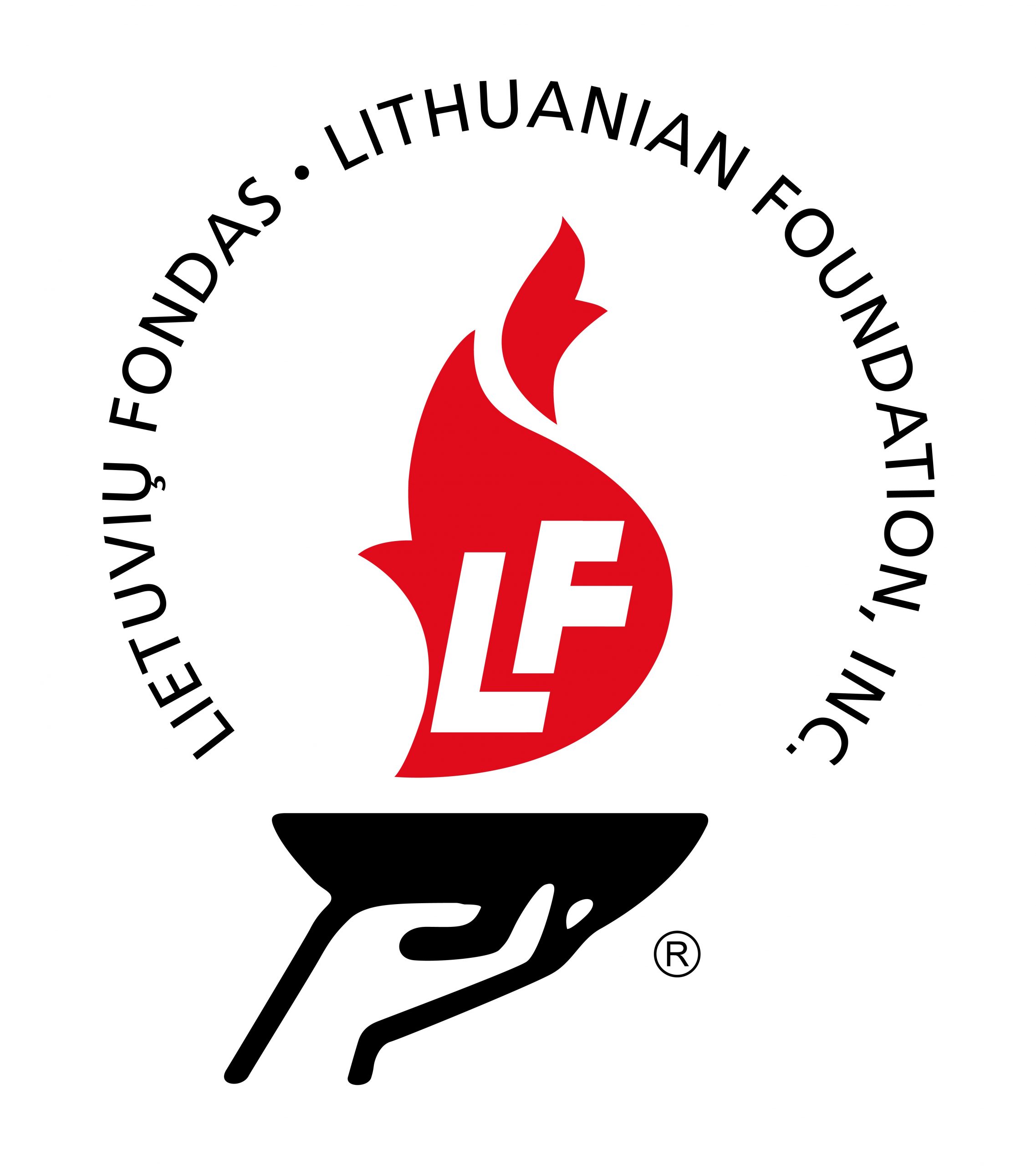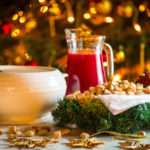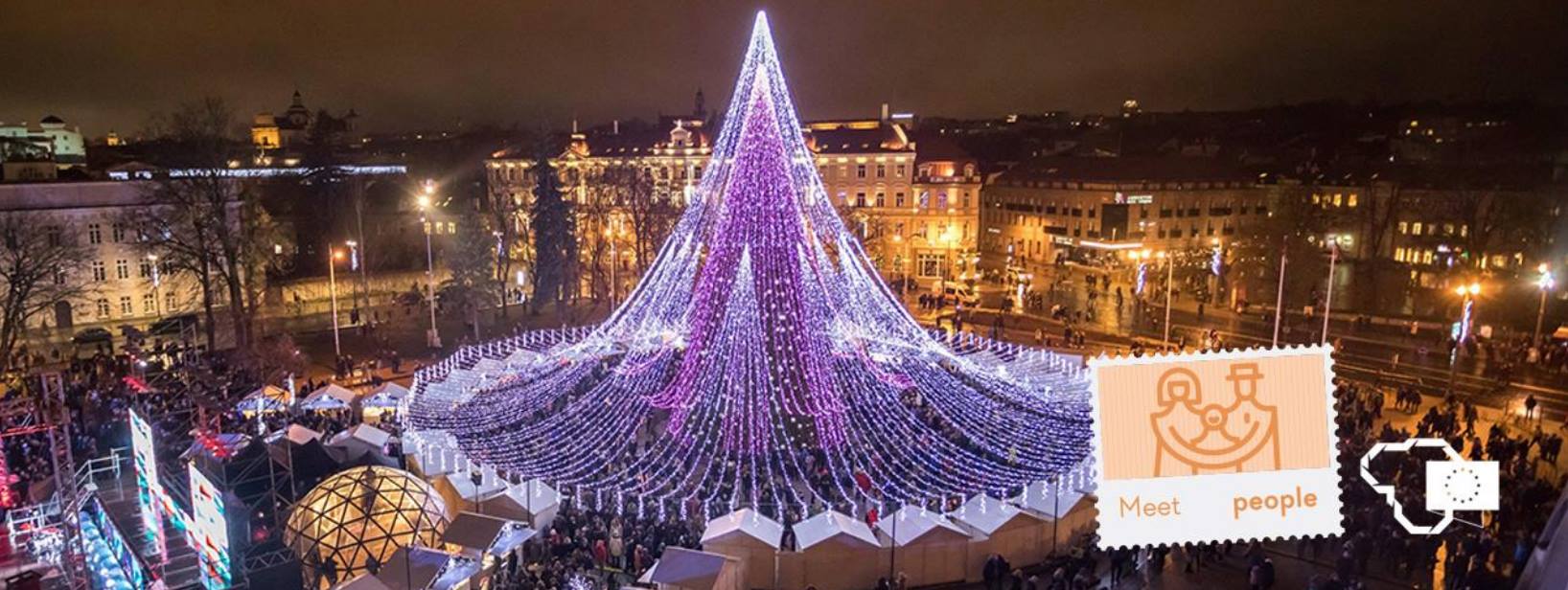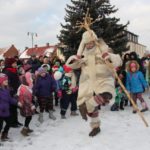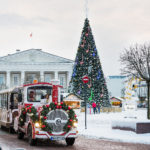Kūčių ir Kalėdų tradicijos
Kūčios
Kūčios – viena seniausių lietuvių švenčių, minima pagal Saulės kalendorių. Tai astronominės žiemos pradžia ir saulės sugrįžimo metas, – rašo ltvirtove.lt. Kūčių dieną, gruodžio 24 d., jokie sunkūs darbai nedirbami: moterys tvarko namus, šveičia sienas, grindis, stalus, suolus, ruošia maistą, vyrai parūpina pašaro gyvuliams, tvarko kiemą, kūrena pirtį, merginos puošia namus šiaudiniais paukštukais, žvaigždėmis, sodais. Tik XX a. pradžioje lietuvių namuose paplito kalėdinės eglutės puošimas, paprotys atėjęs iš Vakarų Europos, iš Vokietijos. Kūčių dieną buvo laikomasi sauso pasninko. Žmonės ne tik pasninkaudavo, bet ir stengėsi susitaikyti, atleisti savo šeimos nariams ir kaimynams. Iki vakaro visi stengėsi atiduoti visas skolas. Kalėdų išvakarėse galiojo daugybė draudimų: negalima siūti, nes gyvuliai sunkiai ves; verpti – viesulas stogą nuneš; malti, malkų skaldyti, kulti – tikėta, kad triukšmingi darbai sukels ateinančios vasaros audras, kurios pakenks pasėliams, gyvuliams, trobesiams ir žmonėms. Taip pat vengta leistis į ilgas keliones, nes bijota susitikti su besiblaškančiomis mirusiųjų dvasiomis. Tą dieną stengtasi neskolinti, kad netektų skolintis visus metus. Kaimynas kaimyno irgi nelankydavo. Ateidavo tik su reikalu. Žmogaus apsilankymas Kūčių dieną sietas ir su geru bičių spiečiumi.
Per Kūčias negalima valgyti mėsos, todėl visi patiekalai ruošiami iš augalinės kilmės produktų ir žuvies. Aukštaitijoje dažnai tądien virdavo miežinę košę. Valgydavo grybus, kopūstus, barščius, virtinius. Prie Kūčių stalo paprastai renkamasi patekėjus Vakarinei žvaigždei. Pagal seną tradiciją prie bendros Kūčių vakarienės stalo būtinai susėsdavo visi šeimos nariai, tikėdami, kad tai padės sustiprinti šeimos santarvę. Ilgą laiką tikėta, kad Kūčių vakariene pavaišintas svetimas žmogus irgi neša namams laimę. Kūčių vakarienę pradėdavo laužydami kalėdaitį, t.y. iš kvietinių miltų bei vandens tyrelės specialioje formoje iškeptą ir bažnyčioje pašventintą paplotėlį. Tai šeimos santarvės, duonos simbolis. Pagal kalėdaičio gabalėlio dydį, raštą sprendžia apie kitus metus: kuriam atlaužta didesnis gabalėlis, tas bus dalingesnis, kam kryžius – vargas ir pan. Kūčių vakarienę sudarydavo dvylika patiekalų, kurių visų buvo būtina paragauti, kad ateinantieji metai būtų sotūs ir turtingi. Tačiau visų patiekalų nors po truputį buvę būtina palikti, tikint, kad naktį kūčiavoti renkasi mirusių šeimos narių vėlės. Ryte buvo žiūrima, ar ant stalo nėra atvirtusio šaukšto. Tai ženklas, kad atėjusios vėlės nulėmė vieno iš šeimos narių likimą: atvirtęs šaukštas reiškė greitą mirtį. Apeiginių patiekalų likučiai ankstų Kalėdų rytmetį padalijami gyvuliams. Žmonės tikėjo, kad Kūčių – Kalėdų naktį gyvuliai kalba žmogaus balsu, kad vidurnaktį vanduo šuliniuose vienam akimirksniui virsta vynu. Ilgiausią metų naktį, kai traukiasi tamsa ir ateina šviesa, žmogus bene aktyviausiai išnaudojo savo ūkio gerovei ar nelaimėms nuspėti: pešdavo šieną iš po staltiesės, traukdavo šiaudą iš tvarto stogo, stebėdavo gamtos reiškinius: žvaigždes, kritulius, vėją.
Kalėdos
Gruodžio 25–26 d. švenčiama viena linksmiausių ir šviesiausių metuose švenčių – Kalėdos. Tomis dienomis daugelyje pasaulio šalių žmonės mini Jėzaus Kristaus gimimą. Pačiais seniausiais laikais Kalėdos buvo švenčiamos kaip Saulės sugrįžimo šventė. Tą dieną švęsdavo ir Naujuosius metus. Kalėdų pavadinimas yra kilęs iš lotyniškojo calendae. Calendarium reiškė skolų knygą – senojoje Romoje skolų procentai buvo mokami kiekvieno mėnesio pirmąją dieną. Calendae reiškė tą pirmąją dieną, o Festum Calendarum (gruodžio 24 d.) – Naujuosius metus. Ilgainiui Calendae arba Kalenda imta vadinti pirmoji Naujųjų metų diena. Vėliau kai kuriose slavų kalbose šiuo žodžiu pavadinta Kristaus gimimo diena. Manoma, kad lietuviai Kalėdų pavadinimą gavo iš slavų, – rašo Tiesa.
Kalėdos švenčiamos dvi dienas. Seniau švęsdavo ilgiau – 3 ir daugiau dienų. Įprasta Kalėdų vaišes ruošti iš vakaro, kartu su Kūčių vaišėmis, nes manoma, kad per Kalėdas negalima daryti jokių darbų. Naktį, po Kūčių vakarienės, nuo seno buvo įprasta budėti prie gimusio Kristaus prakartėlės, o iš ryto skubama į Bernelių mišias. Pirmoji Kalėdų diena švenčiama ramiai, namuose. Grįžus iš bažnyčios sėdama prie stalo, sočiai pusryčiaujama. Kaime seniau anksti rytą nuo stalo nuimdavo nuo Kūčių stalo šieną, išnešdavo gyvuliams. Jeigu iš šieno pribirdavo daug sėklelių, tai reikšdavo, kad ateinančių metų derlius bus labai geras. Pirmąją Kalėdų dieną būtina daug ir sočiai valgyti. Sotus pavalgymas – gero derliaus ir šeimos sveikatos ateinančiais metais sąlyga. Kalėdų stalas – gausus vaišių. Valgoma tai, kas lieka nuo Kūčių stalo, taip pat sūrio, medaus, obuolių, riešutų, namuose kepto pyrago. Būtinas Kalėdų valgis – kiauliena. Patiekdavo virtą kiaulės galvą, šaltienos, kumpio, dešros, netgi keptą paršelį. Žemaitijoje virdavo šiupinį su kiaulės uodega. Mėgstamas Kalėdų valgis – troškinti kopūstai su kiauliena ir karštomis bulvėmis. Gerdavo alų, naminę girą. Antroji Kalėdų diena – Šv. Stepono diena; bažnyčiose šventindavo avižas. Tai svečiavimosi ir jaunimo diena. Antrąją Kalėdų dieną įprasta išeiti iš namų, aplankyti kaimynus, gimines. Seniau po kaimus vaikščiodavo vadinamieji „kalėdotojai“ – jaunimo grupės, kurios aplankydavo visas kaimo sodybas, linkėdavo gero derliaus, sveikindavo šeimininkus, giedodavo kalėdines giesmes, barstydavo grūdus. Grūdų barstymas reiškė naikinimą to, kas jau sena, ir naujo gimimą. Už linkėjimus jiems atsilygindavo vaišėmis, dovanomis. „Kalėdotojai“, kaip laimės nešėjai, stengdavosi aplankyti kiekvieną trobą, nes buvo manoma, kad tik taip galima apsisaugoti nuo nelaimių ateinančiais metais.
Kalėdų senelio funkcijos seniau skyrėsi nuo dabartinio senelio, dalijančio dovanas, ir buvo beveik tokios pat kaip „kalėdotojų“. Pasak Audros Daraškevičienės (Alkas), etnologai sutaria, kad lietuviškas Kalėda yra savas folklorinis veikėjas, niekaip nesusijęs su krikščionišku Šventuoju Mikalojumi, vaikus ir ne tik vaikus aplankančiu Vakarų Europoje, ar komerciniu Santa Klausu. Kalėda apsirėdydavo kaip kaimo piemuo ar seneliukas – baltais kailiniais, ilgais batais, didele linine barzda, rankose turėdavo lazdą. Įdomu, kad Lietuvoje Kalėdų senis vaikščiojo ne vienas, o su gausiu persirengėlių būriu. Irena Čepienė (Alkas) mano, kad Kalėdinių persirengėlių kalėdojimas – ikikrikščioniškus laikus siekiančios apeigos – žynių apsilankymo liekana. Kalėda nedalino daiktinių dovanų. Jis laimino namus, siekdamas užtikrinti gerovę, skalsą ir darną būsimais metais. Jo žodžiams buvo priskiriama maginė galia. Kalėda su palyda Įėję į kiemą ar trobą pagiedodavo giesmių, paskui nusitvėrę namų ruošos įnagius pagrodavo. Už tai buvo pavaišinami riešutais. Kitur senelis vaikščiodavo po trobas ir barstydavo grūdus, linkėdavo gero ir dalindavo vaikams riestainius, pyragėlius, žaisdavo su jais ratelius, žaidimus. Kalėdų senelis iš pradžių retai vaikams pasirodydavo su dovanomis. Paprastai vaikai užmigdavo jo nesulaukę, o rytą jau rasdavo dovanėles – riešutų, obuolių, pyragaičių, saldainių. Etnomuzikologė Dalia Urbanavičienė (Alkas) atkreipia dėmesį į tai, kad lietuviškoje tradicijoje Kalėdų senis ir visa jo palyda didelį dėmesį skyrė ne tik vaikams, bet ir suaugusiems, ypač jaunimui. Kalėdomis prasideda vakaronių, šventvakarių, jaunimo šokių, dainų, žaidimų laikotarpis. Beje, tarpušventis buvo laikomas laikotarpiu, labiausiai tinkamu pirštis ir tuoktis. D.Urbanavičienė teigia, kad ne mažiau svarbi yra ir suaugusiųjų bendruomeniškumą palaikanti kalėdotojų funkcija. Žemaitijoje Kalėdų laikotarpyje buvo būtina aplankyti bei sušelpti ligonis, skurstančius senelius.
Kalėdų laikotarpis trunka iki Trijų Karalių. Visi to laikotarpio vakarai vadinami šventvakariais. Tai gera proga pasisvečiuoti, pasivaišinti, pasilinksminti, nes nereikia dirbti sunkių darbų – per daug šventa. Eglutė namuose stovėdavo irgi iki Trijų Karalių. Kalėdos kaip ir Kūčios turi magišką prasmę, jos gali nulemti ateinančių metų laimę, derlių, šeimyninę gerovę. Per Kalėdas taip pat spėdavo ateinančių metų orą: jei Kalėdos baltos – tai Velykos žalios, jei be sniego – tai per Velykas tikrai snigs. Jei Kalėdų pirmoji diena graži, saulėta – visi metai bus geri. Jei per Kalėdas miške medžiai apšarmoję, bet šiaip jau lauke nelabai šąla – vasara bus lietinga, galima tikėtis stiprių perkūnijų.
***
Christmas Eve and Christmas Day Traditions
Christmas Eve
Christmas Eve is one of the oldest celebrated holidays in Lithuania and is mentioned in the Sun calendar. Ltvirtove.lt says it is the beginning of the astrological winter and the time of the sun’s return. On Christmas Eve day, December 24th, no hard labor is allowed. Women clean their homes, scrub the walls, floors, tables, benches, and prepare the food. Men take care of the feed for the animals, clean up the yard, and prepare the sauna. Girls decorate their homes with straw birds and stars. In the beginning of the 20th century, the tradition of decorating Christmas trees, a custom originally from Germany and Western Europe, spread through the homes of Lithuanians. Dry fasting was typically held Christmas Eve day. Not only did people fast, but they also tried to reconcile and forgive their family members and neighbors. Before evening, everyone tried to give back all their debts. There were a lot of prohibitions on Christmas Eve: you couldn’t sew because the animals would have difficult births; you couldn’t spin because strong winds would carry away the roof; and you couldn’t grind, chop firewood, or thrash because it was believed that loud jobs would wake up the storms in the upcoming summer which would harm the crops, animals, homes, and people. Similarly, people avoided going into long journeys because they feared to encounter the aimlessly wandering spirits of the dead. On that day, people tried not to borrow, so they wouldn’t have to be borrowing the whole year. Neighbors wouldn’t visit each other either and only came if necessary. One’s visit on Christmas Eve day was said to bring good fortune for their bee colonies.
During Christmas Eve one can’t eat meat, that’s why all dishes are prepared from vegetable products and fish. In Aukštaitija, people often cooked barley porridge and also ate mushrooms, cabbage, borscht, and dumplings. People gather by the Christmas Eve table when the Western star rises. Based on old traditions, the whole family would sit by the Christmas Eve dinner table, hoping that it would help the family’s harmony. It was long believed that offering a Christmas Eve dinner to a stranger brings luck to the home. Christmas Eve dinner began by breaking the Christmas wafer- wheat flour and water baked in a special form and sanctified in church. It is a symbol of bread and of family peace. Based on its size, fortunes were told of the next year: whoever broke off the largest piece would be luckiest, whoever got a cross would suffer. Christmas Eve dinner would be made up of 12 dishes and everyone was required to taste each one in order for the coming year to be full and wealthy. Also, it was necessary to leave a small portion of each dish so that the spirits of dead relatives could come celebrate Christmas Eve during the night. If an overturned spoon was found in the morning, it was a sign that the spirits determined the fate of a family member: an overturned spoon meant a quick death. Leftovers were distributed to the animals early Christmas morning. People believed that during Christmas Eve night, the animals spoke in human voices and the water in wells became wine for a moment. People actively tried to exploit the longest night of the year, when the darkness moves away and light comes in, for the good of their farm and to predict disasters: they dug hay under the tablecloth, pulled straw from the roof of the barn, and observed nature: the stars, precipitation, and wind.
Christmas
On December 25-26th, we celebrate one of the most joyous holidays of the year- Christmas. On those days, many people in different countries around the world commemorate the birth of Jesus Christ. In the oldest of times, Christmas was celebrated as the return of the Sun. That day people also celebrated the New Year. The name „Christmas” comes from the Latin „calendae.” „Calendarium” means the book of debt; in Ancient Rome, debt percentages were paid on the first day of each month. „Calendae” means the first day while „Festum Calendarum” (December 24th) means New Year. For a long time, „Calendae” or „Kalenda” was used to name the first day of the New Year. Later on, certain Slavic languages used it to name Christ’s day of birth. Tiesa says it is thought that the Lithuanians got the name of Christmas from the Slavs.
Christmas is celebrated for two days, but earlier, it was celebrated longer for three or even more. It is common to prepare Christmas foods the night before, together with Christmas Eve dishes, because it is believed that you cannot do any work on Christmas day. At night, after Christmas Eve dinner, it was common to watch Christ’s crib and then hurry to Midnight Mass. The first day of Christmas is celebrated peacefully at home. Having returned from church, everyone sits by the table and has a full breakfast. A long time ago, people from the countryside took straw from the Christmas Eve table and brought it out for the animals in the morning. If a lot of seeds fell from the straws, it meant that the coming year’s harvest would be good. On the first day of Christmas, it is necessary to eat a lot. A full meal meant good family health and harvest the coming year. The Christmas table was always filled with many dishes. Everyone ate the leftovers from the Christmas Eve table, but also enjoyed cheese, honey, apples, nuts, and a home baked pie. One of the necessary foods of Christmas was ham. A boiled pig’s head, aspic, jam, sausage, and cooked piglet were served. In Žemaitija, boiled “šiupinys” (barley, pea, meat porridge) with a pig’s tail was popular. Another favorite Christmas food was sautéed cabbage with ham and hot potatoes. People drank beer and homemade kvass. On the second day of Christmas, St. Stephen’s Day, people sanctified oats in church. On this day of Christmas, it was common to leave the home and visit neighbors and relatives. Long ago, it was common for „kalėdotojai,” groups of youth, to visit all of the countryside’s farmstead, wish a good harvest, wish the best for the owners, sing Christmas carols, and sprinkle grains. Grain scattering meant getting rid of the old and welcoming the birth of something new. For their blessings, people often rewarded them with food and gifts. „Kalėdotojai,” the bringers of good luck, tried to visit each home because it was thought that that was the only way to protect the homes from evil in the coming year.
The functions of the old Santa Claus are different from the modern one that gives out gifts, he was almost like the kalėdotojai. According to Audra Daraškevičienė (Alkas), ethnologists agree that the Lithuanian “Kalėda” is their own folklore character, in no way related to the Christian Saint Nicholas from Western Europe or the commercial Santa Claus. Kalėda dressed up like a countryside shepherd or old man- white fur coat, long shoes, big linen beard, and held a stick in his hands. In Lithuania, Santa Claus didn’t walk alone, but with a bunch of dressed up carnival groups. Irena Čepienė (Alkas) thinks that Christmas visits of the groups, a pre-Christian time-honored rite, were remnants of visits by wizards. Kalėda never gave out materialistic gifts. He blessed homes hoping to ensure wellbeing, wealth, and harmony in the following year. His words were held as extremely powerful. Kalėda, together with his accompaniment, sang carols and played music with house cleaning supplies, which would earn them nuts. Elsewhere, the old man would walk around the homes and wish wellness by sprinkling grains; he handed out pretzels and pies to the kids and played games with them. In the beginning, Santa Claus rarely visited children with presents. Usually the children fell asleep and couldn’t wait up for him, but in the morning, they found nuts, apples, pies, and candy. Ethnomusicologist Dalia Urbanavičienė (Alkas) noticed that in Lithuanian traditions, Santa Claus and his whole company gave a lot of attention not only to the kids, but also to adults, especially teens. The beginning of Christmas brings a period of merriment, gatherings, dances, songs, and games. In fact, the time period between holidays was held as the most appropriate for proposals and weddings. D.Urbanavičienė says that it is equally important for the adult community to continue the traditions of the kalėdotojai. In Žemaitija, it was also necessary to visit and donate to the ill or poor during Christmas.
The Christmas time period lasted until the day of the Three Kings. All of the nights in this time period were called holy nights. It was a good opportunity to visit others, treat oneself to plentiful food, have fun, and not engage in hard work because the time is too sacred. A Christmas tree stood at home also until the day of the Three Kings. Christmas, just as Christmas Eve, has a magical purpose; it can determine the coming year’s luck, harvest, and well-being of the family. During Christmas, people also guessed the weather of the coming: if there was a white Christmas, then there would be a green Easter, if there was no snow, then it will snow during Easter. If the first day of Christmas was nice and sunny, then the following week will be good. If the trees in the forest were covered in frost, but it wasn’t very cold outside, then the summer will be rainy, and one could expect strong thunderstorms.
Šaltiniai/Sources: Alkas, LTvirtove.lt, Tiesa
Į anglų k. vertė Eglė Urbonaitė
Rėmėjai
